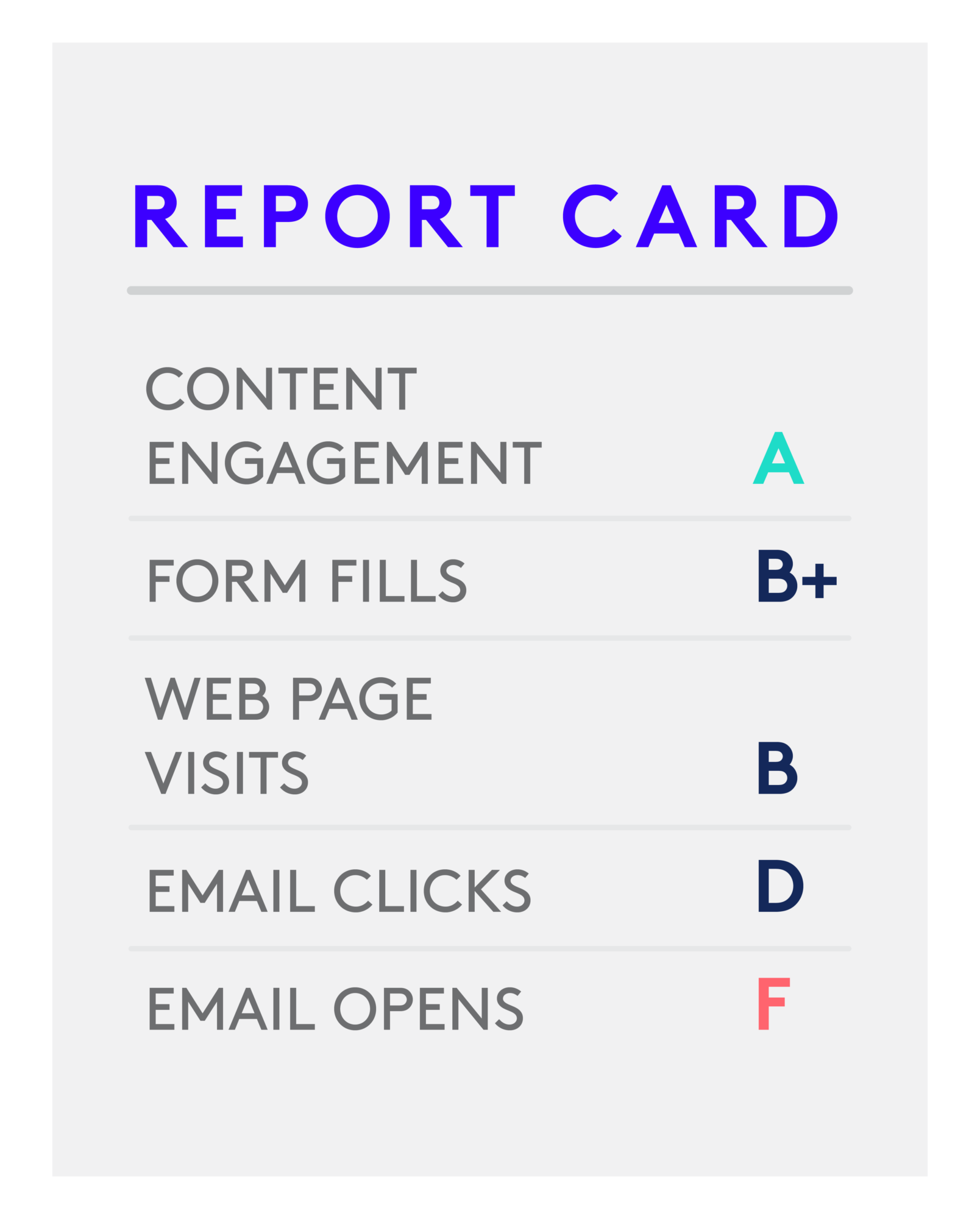
Attack Of The Killer Bots: Your Lead Scoring Models Are At Risk
Marketers beware! Your lead scoring models are at risk. There’s an invisible force threatening the health and success of your lead scoring. They’re called bots (computer programs that perform automated tasks) and the struggle is oh-so-real.
Many lead scoring models today are based on clicks and opens, but these activities may not be the best way to identify an engaged lead. Here’s why: bots are used in email security systems. Enterprise and mid-market organizations use them to firewall and/or dive into emails themselves to test links and make sure there isn’t anything malicious. Though these systems perform an important task for the organization, they also result in a boatload of false positives for marketers and cause lead scoring models to produce inaccurate numbers.
Oh, and by the way, bots are infiltrating everything, not just your email. 52% of so-called web traffic in 2016 was from bots, according to Imperva’s most recent Bot Traffic Report.
Bots, bots, bots–which are good, which are bad (and how bad are they)?
Now I don’t mean to knock all bots. There are some good guys as well! Take Google’s web crawlers for example. Google’s bots drive its search engine and crawl pages to index websites. There are also bots being used by applications to mine data used for good purposes as well as email virus scanners.
But some other bots are bad–real bad. The most common are ‘click bots’ used for ad fraud. Some bots spoof or pretend to be other people and automatically fill out forms on websites. Then there are the bots that scrape the web for malicious purposes.
How bots affect B2B marketing
Bots have many implications for B2B marketers, specifically when it comes to lead qualification. But have no fear, there are ways to combat these bots and save your distressed lead-scoring models!
We’ve narrowed down the 5 main dimensions that lead scoring is typically based on so you can take a critical look at how well they reflect meaningful engagement each and see how they measure up.
1. Email opens
Perhaps the most common metric currently used in lead scoring is email opens. But is this really the best way?
For starters, let’s look at this thread on Oracle’s Topliners community. After noting some suspicious numbers, a marketer asks: What counts as an open?

One reply stands out: “It’s possible for multiple ‘false positive’ opens to be recorded–even if the recipient hasn’t actually opened the email.” The responder goes on to suggest two things:
- Focus on conversions instead of open rates since opens can be an unreliable metric.
- Change reports to list ‘unique’ opens/clicks. This way, duplicates are removed and you get a more realistic view of what’s happening in your campaign.
Final grade: F
Final thought: Email opens are the most susceptible to bots. As a result, they are a very unreliable metric and should be avoided whenever possible.
2. Email clicks
Many marketing automation community threads also discuss the merits of email clicks. This thread on Marketo’s community begins with a marketer questioning the validity of email opens and well as email click false positives.

In the above example, every single lead from the same company was opening 100% of their emails. Seems fishy, right? Well, it is! This is a clear sign that the company has an email provider that crawls and scans all emails before delivery.
A similar thread on Topliners explained it this way: “Some recipients use email scanning software which will open every email instantly, checking for viruses. In some cases, they’ll also click every link! However, as it’s every link simultaneously, it’s usually pretty easy to spot the bot by paying attention to time stamps.”
So, what are the implications of this to you as a marketer? On the one hand, you want to exclude these accounts from your reporting since they’ll give you false positives. But on the other hand, you may overlook some truly engaged leads, which can be detrimental.
Final Grade: D
Final thought: Email clicks are slightly more reliable than opens, but will still result in many false positives for your lead scoring.
3. Web page visits
Web page visits are a solid step up from email clicks and opens. The volume of site visits is a clear indication of a prospect’s level of interest.
One drawback to this metric is it doesn’t tell you that actual amount of time a prospect has spent on your content. So you know they’ve been there, but you don’t know their level of engagement with your content.
Final grade: B
Final thought: Web page visits are more reliable than clicks and opens; However, since you can’t measure time spent with your content, the quality of that visit is unknown.

4. Form fills
Ah, the form fill. Another very popular but sometimes misleading metric used for lead scoring.
When someone fills out a form, they are expressing some interest in whatever content is on the other side of that form. The prospect is also well aware of the information they are disclosing to you. So you have their info, but you don’t know how deeply they engaged with the piece of content. Did they download and read it, or did they save it to their desktop and forget about it? It’s difficult to gauge the quality of that lead before you pass it along to the sales team.
On occasion, bots fill out forms with ‘dummy data,’ but this can be very easy for marketing teams to identify and dismiss.
Final grade: B+
Final thought: Forms fills are reliable, but it can be difficult to get people to fill them out. There is also no way to know how much time the prospect spent with the actual content.
5. Content engagement
An emerging dimension used for lead scoring is content engagement, which tells you how long the prospect engaged with your content for.
Knowing how deeply a prospect engaged with your content indicates their level of interest in your message and how educated they’ve become about what you do. These prospects are primed to become truly qualified leads and have meaningful conversations with sales.
Marketing automation platforms tend to focus more on whether or not the engagement, such as a click or a form fill, happened and less around the quality of that engagement. But there are solutions that can provide analytics around true content engagement metrics that integrate directly with your trusty MAP. Some companies doing great things in this space include Vidyard, Wistia, SnapApp, and yours truly, PathFactory.
Final grade: A
Final thought: Content engagement is the best measure of “digital body language” available today. Meaningful engagement is a true sign of sales-readiness!


How to spot a bot
What can you do to find the fake “leads” threatening your marketing automation platform data? Start by looking for unusual patterns and then segment leads based on this suspicious behavior.
For example:
- Segment leads that have clicked a link in an email but have no other activity.
- Sort the segment results by company name to find companies that have multiple leads.
- Check these leads for suspicious activity. For example:
- Email clicks occurring exactly when an email is delivered
- Email opens happening after clicks
- Multiple email clicks recorded at the same time
- Abnormally high click rates
- Abnormally high open rates
The example below is a real list we pulled from PathFactory’s very own marketing automation instance. As you can see, this lead exhibited signs A-C of the suspicious behavior listed above.

We noticed a similar pattern of suspicious behavior with other leads at this account as well. This tells us that leads coming from this company are protected by email security software and should not be included in any reporting. Bot down!
Here is another real report showing email performance for a specific company. As you can see, there are abnormally high click-through and open rates pretty much across the board. A clear sign of a bot attack!

While the threat of killer bots is very very real, there are ways you can arm yourself (and your data) so their effect is minimized. Have no fear, brave marketer. Now go forth and lead score.
This blog post is based on a webinar by PathFactory’s Head of Solutions, Dan Ng, and, Senior Demand Gen Manager, Chris Vandermarel.
